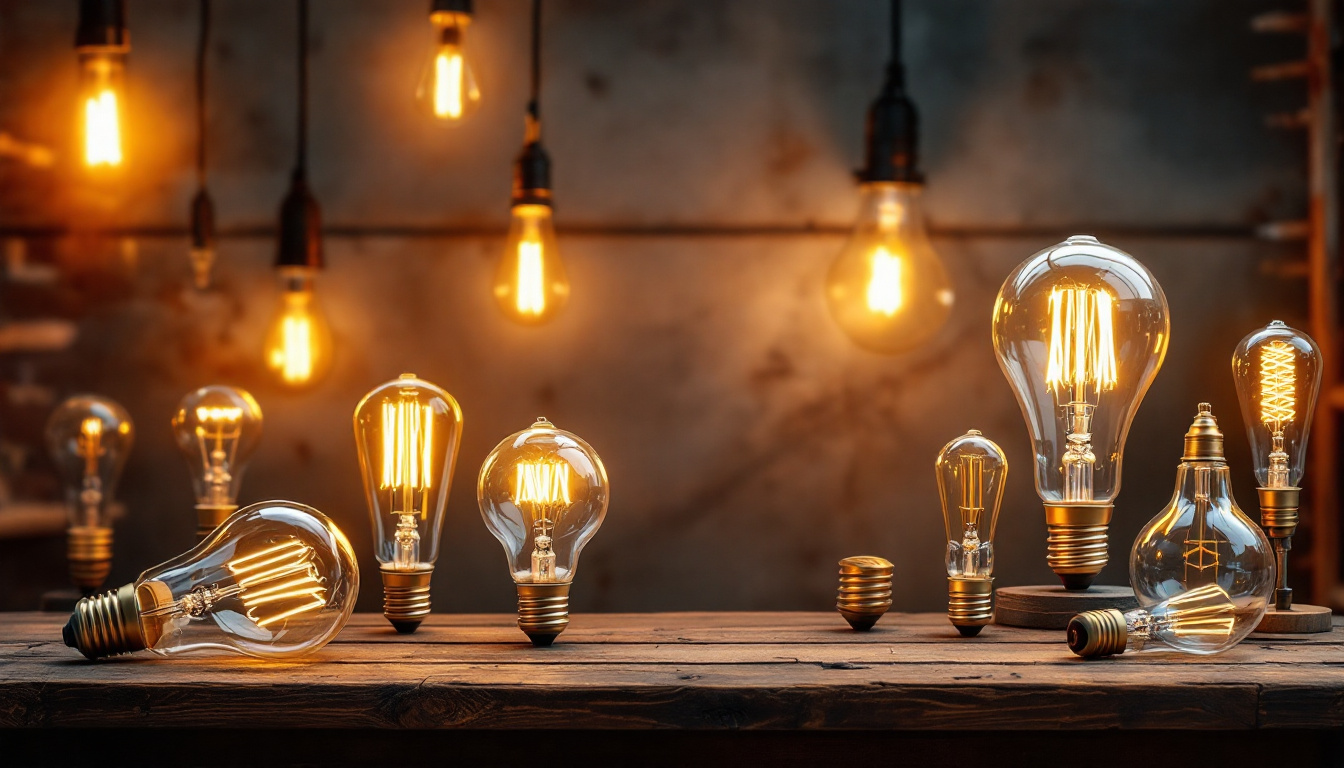

In the evolving world of outdoor lighting, LED light poles have emerged as a popular choice for both commercial and residential applications. Their energy efficiency, longevity, and versatility make them an ideal solution for lighting contractors. However, the installation and maintenance of LED light poles can present various challenges. This article aims to provide lighting contractors with insights and strategies to avoid common issues associated with LED light poles.
Before delving into the challenges and solutions, it is essential to understand the technology behind LED light poles. Light Emitting Diodes (LEDs) are semiconductor devices that emit light when an electric current passes through them. Unlike traditional incandescent bulbs, LEDs convert a higher percentage of energy into light rather than heat, making them more efficient. This efficiency not only contributes to lower energy bills but also plays a significant role in reducing the overall carbon footprint associated with lighting.
Furthermore, the compact size of LEDs allows for innovative designs and applications that were previously unfeasible with larger lighting technologies. Their ability to be integrated into various fixtures and designs means that urban planners and architects can create aesthetically pleasing environments while maintaining functionality and sustainability.
LED light poles offer numerous advantages over conventional lighting solutions. They are not only energy-efficient but also have a longer lifespan, which can significantly reduce maintenance costs. Additionally, LEDs provide better illumination quality, enhancing visibility and safety in outdoor environments. The light produced by LEDs can be tuned to different color temperatures, allowing for customizable lighting solutions that can improve the ambiance of public spaces.
Moreover, the versatility of LED light poles allows for various applications, from street lighting to architectural illumination. Their adaptability to different designs and heights makes them suitable for diverse projects, catering to the specific needs of clients. This flexibility extends to smart lighting capabilities, where LED poles can be equipped with sensors and connectivity features, enabling real-time monitoring and energy management. Such advancements not only enhance the functionality of the lighting systems but also contribute to the development of smart cities, where technology and infrastructure work in harmony to improve urban living.
Despite their advantages, several issues can arise during the installation and maintenance of LED light poles. Understanding these challenges is crucial for lighting contractors aiming to deliver high-quality services. Common problems include improper installation, compatibility issues with existing systems, and inadequate maintenance practices. For instance, if an LED light pole is not installed at the correct angle or height, it can lead to uneven lighting, creating dark spots that compromise safety.
Additionally, the rapid advancement of LED technology can lead to compatibility issues with older electrical systems, necessitating upgrades that may not have been anticipated during planning. Regular maintenance is also essential, as dust and debris can accumulate on the fixtures, diminishing their performance over time. Therefore, developing a comprehensive maintenance plan that includes routine inspections and cleaning can help mitigate these issues, ensuring that the LED light poles continue to function optimally and provide the intended benefits to the community.
One of the primary areas where lighting contractors may face difficulties is during the installation phase. Proper installation is critical to ensure that LED light poles function optimally and provide the desired illumination.
A thorough site assessment is essential before installation. Factors such as the height of the pole, the surrounding environment, and the intended use of the lighting must be considered. Failing to conduct a comprehensive assessment can lead to improper placement, resulting in inadequate lighting or glare issues.
Contractors should evaluate the terrain, potential obstructions, and the proximity to power sources. This information is vital for determining the appropriate pole height and light distribution pattern, ensuring that the lighting meets the project’s requirements. Additionally, understanding the local climate is crucial, as weather conditions can affect the performance and longevity of the lighting fixtures. For instance, areas prone to high winds or heavy snowfall may require sturdier poles and fixtures designed to withstand such elements, further complicating the installation process.
Electrical compatibility is another critical aspect of LED light pole installation. Contractors must ensure that the existing electrical infrastructure can support the new LED fixtures. This includes checking voltage levels, circuit capacity, and wiring conditions.
In some cases, retrofitting existing poles with LED fixtures may require additional electrical work. Contractors should be prepared to address these issues to avoid delays and ensure a seamless installation process. Furthermore, understanding the energy efficiency of the new LED systems is essential, as it can lead to significant cost savings over time. Contractors should also be aware of any local regulations or incentives related to energy-efficient lighting, which may influence the choice of fixtures and installation methods. This knowledge can help contractors not only meet compliance standards but also provide valuable insights to clients about potential long-term benefits and savings associated with their lighting choices.
While LED light poles are known for their longevity, they still require regular maintenance to ensure optimal performance. Lighting contractors play a vital role in establishing maintenance protocols that can prevent issues down the line.
Implementing a routine inspection schedule is crucial for identifying potential problems early. Regular checks can help spot issues such as loose connections, damaged fixtures, or signs of wear and tear. By addressing these concerns promptly, contractors can extend the lifespan of the lighting system and maintain its efficiency.
During inspections, it is essential to assess not only the LED fixtures but also the poles themselves. Corrosion, rust, or physical damage can compromise the integrity of the installation, leading to safety hazards.
Another critical aspect of maintenance is cleaning. Dust, dirt, and debris can accumulate on LED fixtures, diminishing their light output and efficiency. Contractors should establish a cleaning schedule that aligns with the environmental conditions of the installation site.
Using the appropriate cleaning materials and techniques is vital to avoid damaging the LEDs. Soft cloths and non-abrasive cleaners should be employed to ensure that the fixtures remain in optimal condition.
Compatibility between LED light poles and existing infrastructure can pose significant challenges for lighting contractors. Understanding these issues and how to mitigate them is essential for successful project execution.
As smart city initiatives gain traction, many lighting contractors are tasked with integrating LED light poles into existing smart systems. This integration can involve compatibility with sensors, control systems, and communication networks.
Contractors must ensure that the LED fixtures can communicate effectively with the smart infrastructure. This may require additional components or software updates, which should be factored into the project timeline and budget.
In some cases, contractors may encounter legacy lighting systems that are not compatible with modern LED technology. Retrofitting these systems can be complex and may require specialized knowledge and skills.
To address this challenge, contractors should conduct a thorough analysis of the existing system and identify potential barriers to integration. Collaborating with manufacturers and suppliers can provide valuable insights and solutions for retrofitting legacy systems.
Selecting the appropriate LED light poles and fixtures is crucial for ensuring a successful installation. Lighting contractors must consider various factors when making product choices.
Investing in high-quality LED products is essential for long-term performance and reliability. Contractors should seek products from reputable manufacturers known for their commitment to quality and innovation.
When evaluating products, it is important to consider factors such as lumen output, color temperature, and energy efficiency ratings. These specifications can significantly impact the effectiveness of the lighting solution and the satisfaction of the client.
In addition to quality, contractors should also consider the warranty and support offered by manufacturers. A robust warranty can provide peace of mind and protect against potential defects or failures. Furthermore, reliable customer support can assist contractors in resolving any issues that may arise during installation or maintenance.
To navigate the complexities of LED light pole installation and maintenance, ongoing training and education are essential for lighting contractors. Staying informed about the latest technologies, best practices, and industry trends can enhance the quality of services provided.
Obtaining industry certifications can demonstrate a contractor’s commitment to professionalism and expertise. Certifications often cover essential topics such as electrical safety, energy efficiency, and lighting design principles.
Participating in workshops, seminars, and online courses can further enhance knowledge and skills. Networking with other professionals in the field can also provide valuable insights and foster collaboration on projects.
Lighting contractors must be aware of local regulations and standards related to outdoor lighting. Compliance with these regulations is crucial for ensuring safety and avoiding potential legal issues.
Regularly reviewing updates to building codes and energy efficiency standards can help contractors remain compliant. Engaging with industry associations can also provide access to resources and information on regulatory changes.
LED light poles represent a significant advancement in outdoor lighting technology, offering numerous benefits for both contractors and clients. However, the challenges associated with their installation and maintenance cannot be overlooked. By understanding these challenges and implementing effective strategies, lighting contractors can avoid common issues and deliver high-quality lighting solutions.
From conducting thorough site assessments to selecting the right products and ensuring proper maintenance, each step plays a vital role in the success of a project. By investing in education and staying informed about industry trends, contractors can enhance their expertise and provide exceptional services in the ever-evolving field of outdoor lighting.
Ultimately, the goal is to create safe, efficient, and aesthetically pleasing lighting solutions that meet the needs of clients while minimizing potential issues. With the right approach, lighting contractors can navigate the complexities of LED light poles and contribute to the advancement of sustainable lighting practices.
Ready to elevate your lighting projects with the efficiency and sustainability of LED light poles? At LumenWholesale, we provide lighting contractors with the highest quality, spec-grade lighting products at unbeatable wholesale prices. Say goodbye to local distributor markups and hello to superior lighting solutions that fit your budget. Our extensive selection not only meets but exceeds industry standards, ensuring you deliver reliable, high-performance lighting for every project. Plus, with free shipping on bulk orders, you can enjoy premium lighting at the best value — all without hidden fees or compromises. Don’t let lighting challenges dim your project’s potential. Wholesale Lighting at the Best Value is just a click away. Experience the LumenWholesale difference today!

Discover essential insights into light fixtures that every lighting contractor should know.

Discover the latest trends in affordable 10-meter LED lighting that every contractor should know.

Discover why purchasing Bluetooth control systems in bulk from local distributors might not be your best bet.

Discover the charm and efficiency of vintage LED bulbs in this insightful guide tailored for lighting contractors.
Get notified when NEW deals are released.
Optimize your budget with wholesale discounts.
Only top-quality, specification-grade lighting products.
No additional costs at checkout - what you see is what you pay.
We understand the unique needs of contractors.